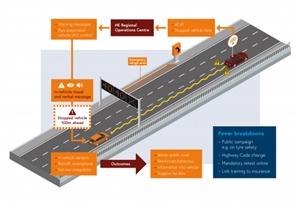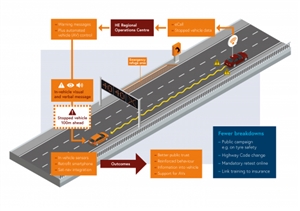Smart Motorways bring significant benefits, as they have been designed and implemented to address recurrent congestion on heavily used sections of motorways. We submitted a response to the Transport Select Committee on the roll-out and safety of smart motorways.
Our view is that firstly, safety can be improved by reducing the number of times vehicles stop on motorways and then improving how they are detected, and other drivers then warned and instructed, as illustrated in this diagram. 
Smart Motorways Infographic.pdf
In order to achieve this we believe that the Government should:
- Think users: through more training and increasing vehicle roadworthiness.
- Make use of what is there already: using sat nav for in-vehicle messaging and services such as Waze, to alert drivers.
- Safeguard the future: through learning lessons from other transport modes.
We have also written a blog on this topic with more information: How do we make Smart Motorways safer?
We are interested in your thoughts on making Smart Motorways more safe, our proposed solutions, or if there is anything that we've missed. Please log in to your IET Community account to share your comments.


